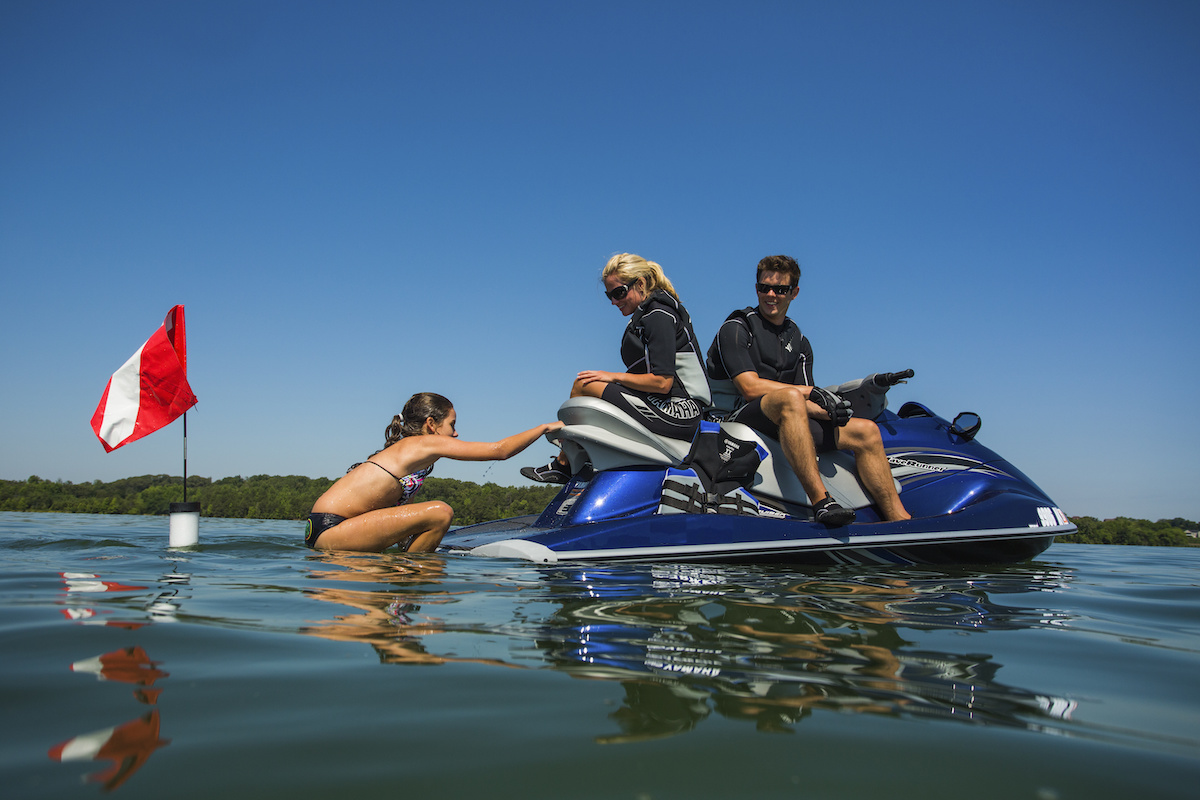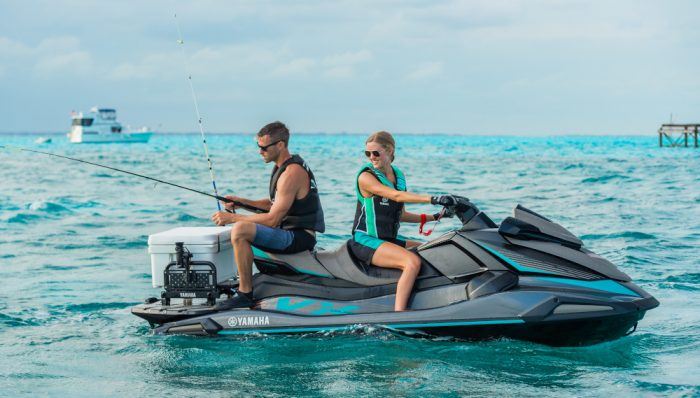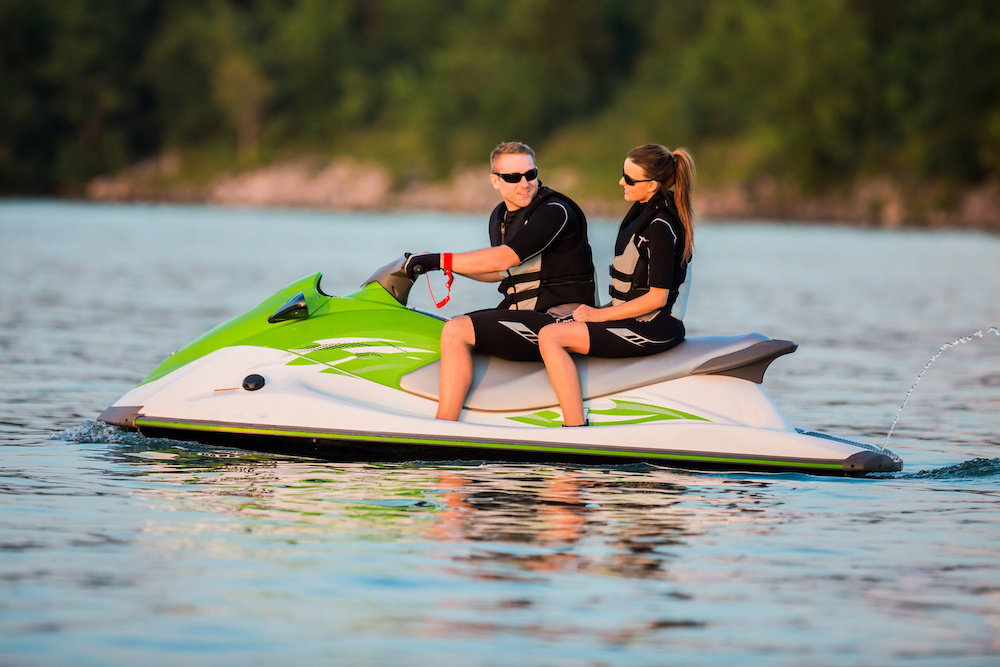Personal Watercraft (PWC) Safety Guide

Personal watercrafts (PWCs), also commonly referred to as their brand names like Jet Ski, WaveRunner or Sea-Doo, have evolved from unique, niche vehicles to one of the most popular categories of boats currently on the water. But while the fun factor is high, and cost and hassles comparatively low, PWC should never be dismissed as a big kid’s toy. Their unique design, propulsion, and maneuverability demand that operators both understand and respect the craft’s abilities.
Here’s how to have a fun—and safe—PWC experience.

Before You Ride
- Familiarize yourself with the owners’ manual and all safety warnings, paying particular attention to the operation of the jet jump.
- PWC manufacturers recommend neoprene shorts or wetsuits to protect lower-body openings from impact with the water during a high-speed fall or the powerful thrust produced by the pump.
- Never attempt to board when the engine is running, and keep loose clothing and long hair clear of the pump intake.
- As with any type of boating, thoroughly understand boating laws and the rules of the road. Many states impose stricter age restrictions on personal watercraft use. Check local boating laws for the specifics in your area.
- Different size PWC have different passenger and weight capacities; exceeding either could negatively affect the handling of the craft.
- Familiarize yourself with the handlebar steering, throttle control and safety lanyard. Never operate a PWC without the safety lanyard attached to both craft and driver’s wrist or life jacket. Remove the lanyard whenever the craft is unattended to prevent unauthorized use.
- Driver and passengers should always wear a Coast Guard-approved life jacket.
- Eyewear will block the force of wind and water spray that could impair vision.
- Gloves and footwear offer welcome additional grip and traction.
- Wetsuits or windbreaker-style jacket/pant combos are advisable for cooler weather because PWC riders are far more exposed to the elements than the typical boater.

Gloves and footwear offer welcome additional grip and traction.
Familiarizing Yourself with Your Personal Watercraft
Take time to familiarize yourself with a PWC’s unique handling. Choose a quiet area and practice using the throttle, carving through turns, and coming to a stop. If equipped, put the craft into reverse and note how it steers when backing.

Understand that throttle is required to make a turn. Rather than a rudder, personal watercraft use directed thrust produced by the jet pump to steer. If you stop that thrust by releasing the throttle or stopping the engine, the driver will lose directional control over the craft.
Because releasing the throttle and turning the handlebars fully to one side is a common reaction in a collision-avoidance situation, manufacturers long ago addressed this scenario by having craft automatically apply a small amount of thrust should the driver perform those actions.
That minimal amount of thrust is enough to initiate a turn in the direction the driver intended and possibly avoid an obstacle, but manual throttle input is essential for true directional control.